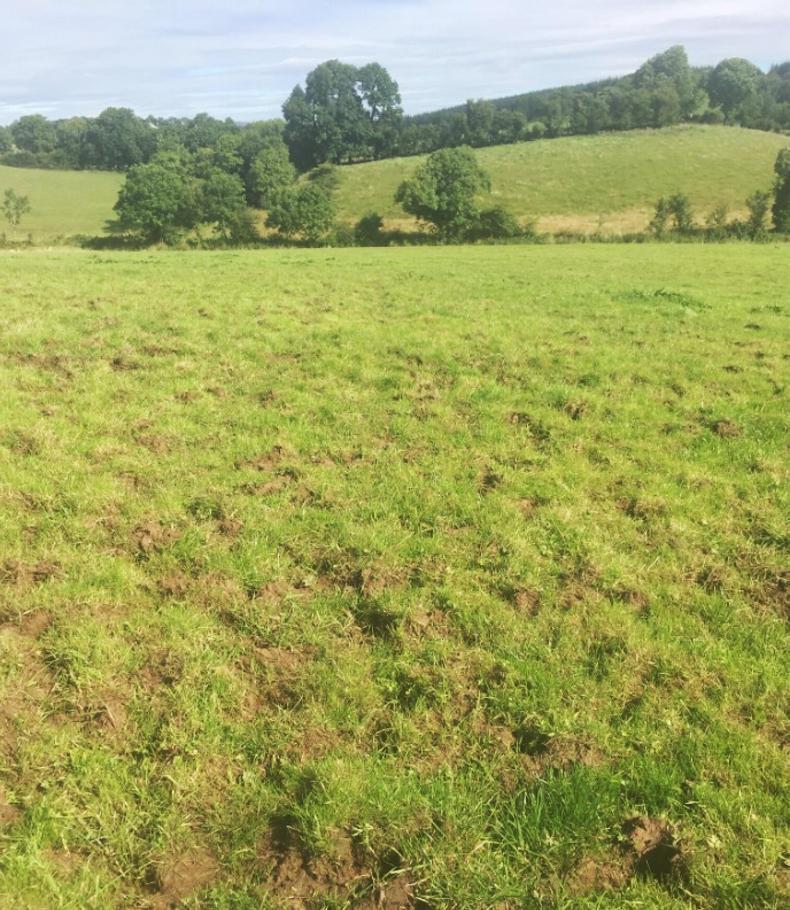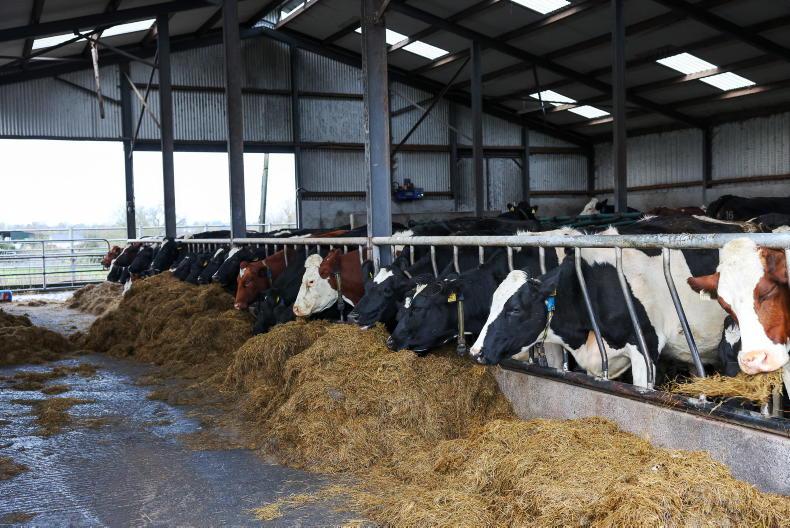Torrential rain over the weekend has made grazing conditions extremely difficult on many farms, particularly those on heavy soils. The rain was widespread and the amount that fell over the weekend was in the region of 20 to 50mm.
However, this weekend’s weather needs to be viewed in the context of what has come before, and for farmers in the north and west, July and August has been characterised as being one of the wettest in years meaning that land is already saturated and this weekend’s rain was the last thing they needed.
Managing cattle
Milking cows are nearly the easiest to manage. If struggling with ground conditions, move them to the driest paddocks, give them a smaller area (enough for half a day’s grazing) and only let them graze for three-hour stints if the ground is really bad. Cows will eat over 90% of their total intake in two three-hour grazing periods.
Dry autumn cows, replacement heifers and cattle pose a harder challenge to manage as in many cases they do more walking around and don’t know when to stop walking. In some cases, housing some of these stock is the only solution.
Some farmers have cows housed but this should really only be a last resort – keeping some amount of grass in the diet is essential – both from a cost of feed basis but also from a quality perspective as feeding all forage in the form of silage will be insufficient to meet the energy and protein needs of the cow unless a lot of meal is going to be fed. Body condition score will drop.
When looking at a brown grass field in early September it is easy to despair, but stay positive as the forecast for the coming week is better with high temperatures and less rain in the forecast so conditions should improve as the week goes on.
Reality
The other point to mention is that on many heavy farms there is lots more work to be done on drainage. While not a solution to all the problems on heavy farms, it does make a huge difference in terms of getting water away quickly so speeds up drying time and enables fields to be grazed sooner after heavy rain.
The reality is that farming in a high-rainfall area with heavy clay soils is very difficult. On many farms in these regions, investment has been centred on buildings and facilities to house stock when weather is poor, which is perfectly acceptable. However, land and soils need similar investment in terms of grazing infrastructure like roadways and proper paddock systems and also in drainage.
Fields drains need to be cleaned at least every two years and collector drains need to be rodded every five or six years depending on the mineral deposits and topography. In many cases, the return from drainage work will be huge.
Read more
Monday management: Last chance if considering reseeding
Weekly weather: a mix of dry spells and heavy showers
Torrential rain over the weekend has made grazing conditions extremely difficult on many farms, particularly those on heavy soils. The rain was widespread and the amount that fell over the weekend was in the region of 20 to 50mm.
However, this weekend’s weather needs to be viewed in the context of what has come before, and for farmers in the north and west, July and August has been characterised as being one of the wettest in years meaning that land is already saturated and this weekend’s rain was the last thing they needed.
Managing cattle
Milking cows are nearly the easiest to manage. If struggling with ground conditions, move them to the driest paddocks, give them a smaller area (enough for half a day’s grazing) and only let them graze for three-hour stints if the ground is really bad. Cows will eat over 90% of their total intake in two three-hour grazing periods.
Dry autumn cows, replacement heifers and cattle pose a harder challenge to manage as in many cases they do more walking around and don’t know when to stop walking. In some cases, housing some of these stock is the only solution.
Some farmers have cows housed but this should really only be a last resort – keeping some amount of grass in the diet is essential – both from a cost of feed basis but also from a quality perspective as feeding all forage in the form of silage will be insufficient to meet the energy and protein needs of the cow unless a lot of meal is going to be fed. Body condition score will drop.
When looking at a brown grass field in early September it is easy to despair, but stay positive as the forecast for the coming week is better with high temperatures and less rain in the forecast so conditions should improve as the week goes on.
Reality
The other point to mention is that on many heavy farms there is lots more work to be done on drainage. While not a solution to all the problems on heavy farms, it does make a huge difference in terms of getting water away quickly so speeds up drying time and enables fields to be grazed sooner after heavy rain.
The reality is that farming in a high-rainfall area with heavy clay soils is very difficult. On many farms in these regions, investment has been centred on buildings and facilities to house stock when weather is poor, which is perfectly acceptable. However, land and soils need similar investment in terms of grazing infrastructure like roadways and proper paddock systems and also in drainage.
Fields drains need to be cleaned at least every two years and collector drains need to be rodded every five or six years depending on the mineral deposits and topography. In many cases, the return from drainage work will be huge.
Read more
Monday management: Last chance if considering reseeding
Weekly weather: a mix of dry spells and heavy showers









SHARING OPTIONS